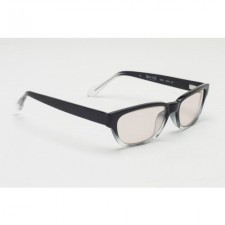Did You Know That Glass Eyeglasses Lenses Are Still Made Today at MyEyewear2GO

Middlesex, NJ, September 14, 2016 (Newswire.com) - Eyeglasses are believed to have been invented in Italy, around the late 13th century. Early pairs of spectacles consisted of two magnifying glasses riveted together and gingerly balanced on the nose. Yet, before that, the more advanced glass convex lenses served crucial roles as telescopes for sea navigation and as sighting apparatus on the battlefield. Modern eyeglasses have undergone many technological advances. Terms such as progressive, high-definition, and transitional all refer to state-of-the-art eyeglass technologies that offer the wearer a greater vision acuity and increased comfort.
While polycarbonate lenses seem to garner much attention, glass eyeglasses lenses are still made today and offer many advantages over plastic and polycarbonate options. In a 20/20 article, it has been reported that "interest in glass lenses is starting to grow anew," due to advanced materials and manufacturing technologies.
With over 88 million eye exams performed annually, eye care professionals are accurately assessing the client's lifestyle choices and visual needs, and many are suggesting glass lenses as a preferred choice. With so many available options when selecting frames and lenses, knowing the properties of your eyeglass materials can help demystify the decision. Ask yourself the following questions to help determine the best lens material:
- am I participating in activities that may scratch my lens?
- do I have weak eyesight and need a strong prescription?
- are bifocals or special coatings needed?
- how will extreme environmental temperatures affect my lenses?
- am I 'less than careful' with my eyeglasses?
Traditional myths concerning glass as a choice for lens material no longer apply, as glass lenses have become thinner and lighter, and high index glass lenses will handle the stronger prescriptions that are common in near-sightedness without the increased thickness. The many reasons why glass lenses are making a comeback include:
Glass lenses offer superior clarity and optics. Clarity is a measure of the transparency of a material and the distinction of objects that appear when viewed through that material. Glass offers the least distortion of images due to the inherent optical nature of glass; this feature results in higher eye comfort for detailed work or for those that wear their eyeglasses all day.
The exceptional scratch resistance of glass over plastic is a prime factor for persons who often leave their eyeglasses laying on surfaces or spend a lot of time outdoors. For those with a less than careful approach with eyeglasses, a quick wipe with almost any cleaning agent will return your glass lenses to pristine condition.
Extreme temperatures do not affect glasses lenses, so if leaving eyeglasses in the car during hot summer or cold winter days is an issue, then the glass lens is the best choice. Plastics lenses will have some degree of warp or reduced optical clarity if exposed to sun/heat for an extended length of time. It would take upwards of 900 degrees F. to damage glass lenses.
Strong prescriptions are now handled better with glass lenses due to the availability of high index lenses which means stronger prescriptions end up with thinner edges, a definite plus for cosmetics appeal. Also, glass lenses can be aspheric, making them flatter, thinner and provide better vision than ordinary lenses. Edge-thinning techniques are a part of the growing technology of 'free-form process'. This digital based manufacturing process creates glass lenses using a high-tech precision prescription from your eye care provider.
Contact us at MyEyewear2GO when choosing your eyeglass frames for glass lenses. Iconic frames such as cat-eye, rectangular, or oval are classic options for glass lenses. Glass lenses have become an attractive lens material when mated with the perfect frames and will present a perceived quality that surpasses plastic lenses.
Source: MyEyewear2GO